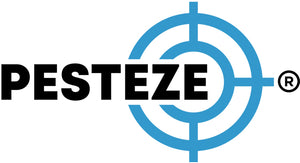FARM AND BARN RODENT MANAGEMENT STRATEGIES

FARM AND BARN RODENT MANAGEMENT STRATEGIES
SUMMARY
Rodents can cause significant damage to farms and barns by contaminating feed, chewing equipment, and spreading disease. This guide covers practical and effective strategies to manage rodents in agricultural settings.
FEATURES
-
Feed Protection: Store animal feed in sealed, rodent-proof containers.
-
Structural Repairs: Seal gaps in barns, silos, and storage areas.
-
Traps & Monitoring: Use snap traps, electronic traps, and monitoring systems.
-
Natural Predators: Encourage barn owls, cats, or other rodent hunters.
-
Sanitation Practices: Keep barns clean and remove spilled feed.
-
Integrated Pest Management: Combine prevention, trapping, and monitoring for long-term success.
DESCRIPTION
Farms and barns are particularly attractive to rodents because they provide food, shelter, and warmth year-round. Left unchecked, rodents can contaminate animal feed, spread disease to livestock, and damage structures or machinery. Implementing a comprehensive rodent management plan is essential to protect both farm operations and animal health.
The first step is feed protection. Rodents are drawn to grains, hay, and livestock feed, so it is important to store all food in sealed metal or heavy-duty plastic containers. Avoid leaving feed bags open or accessible, and clean up spills immediately. Elevating feed bins also makes it harder for rodents to reach food sources.
Structural repairs play a major role in prevention. Barns, silos, and sheds often develop cracks, holes, or gaps that serve as entry points. Sealing these areas with mesh, caulk, or flashing reduces opportunities for rodents to get inside.
Traps and monitoring devices help control and track infestations. Snap traps and electronic traps can be placed in rodent travel paths, while monitoring systems help farmers assess rodent activity and adjust strategies accordingly. Multi-catch traps are especially useful in barns where rodent activity is high.
Natural predators can also assist in rodent control. Barn owls, for example, are effective hunters and can significantly reduce rodent populations. Encouraging natural predators through owl boxes or allowing farm cats to roam the premises adds another layer of protection.
Sanitation practices are essential for long-term management. Rodents thrive in cluttered, dirty environments. Keeping barns swept, removing spilled feed, and reducing hay or straw piles minimizes nesting opportunities.
The most effective farms use integrated pest management (IPM), a system that combines prevention, structural maintenance, sanitation, trapping, and monitoring. This holistic approach ensures rodent populations remain under control without overreliance on poisons or chemicals.
By combining feed protection, repairs, sanitation, and natural predators with an IPM strategy, farmers can effectively manage rodents and safeguard their barns, equipment, and livestock.
- Saharsh Bansal


Comments 0